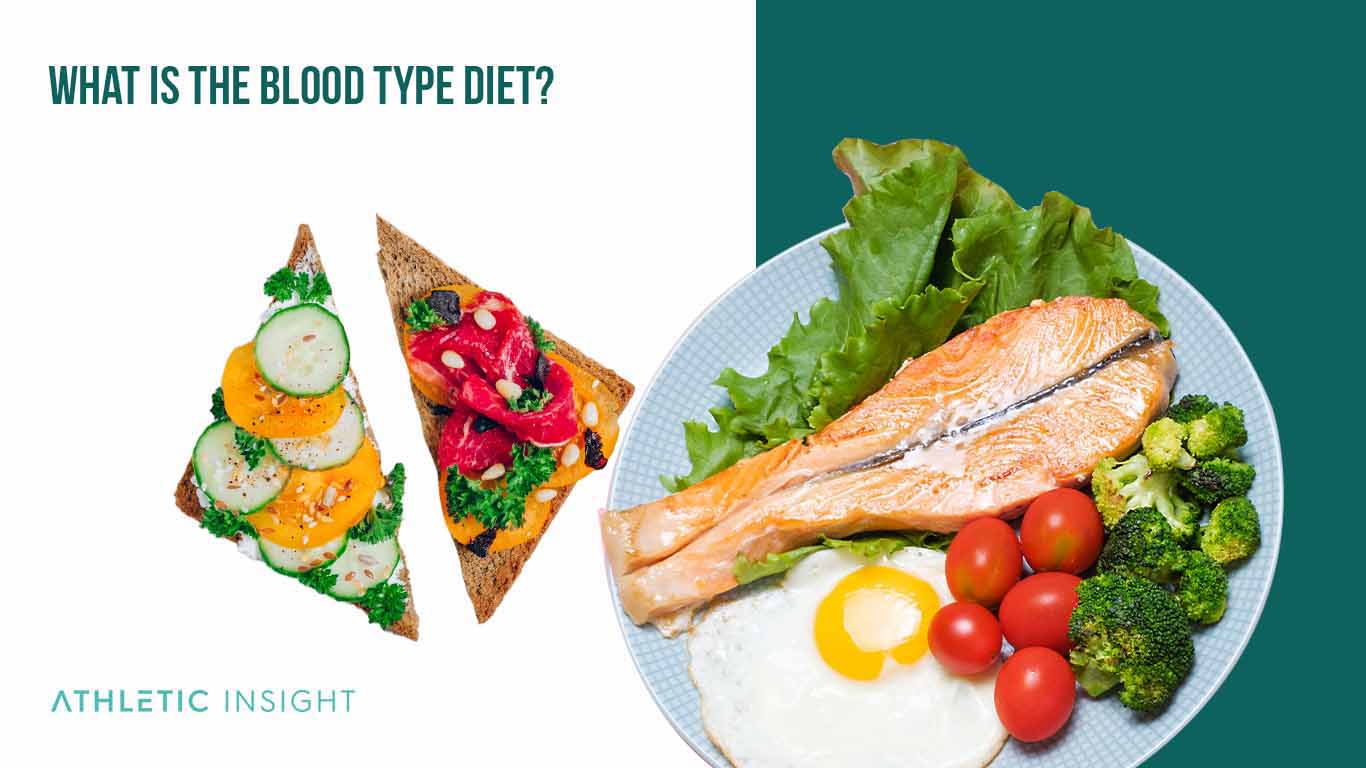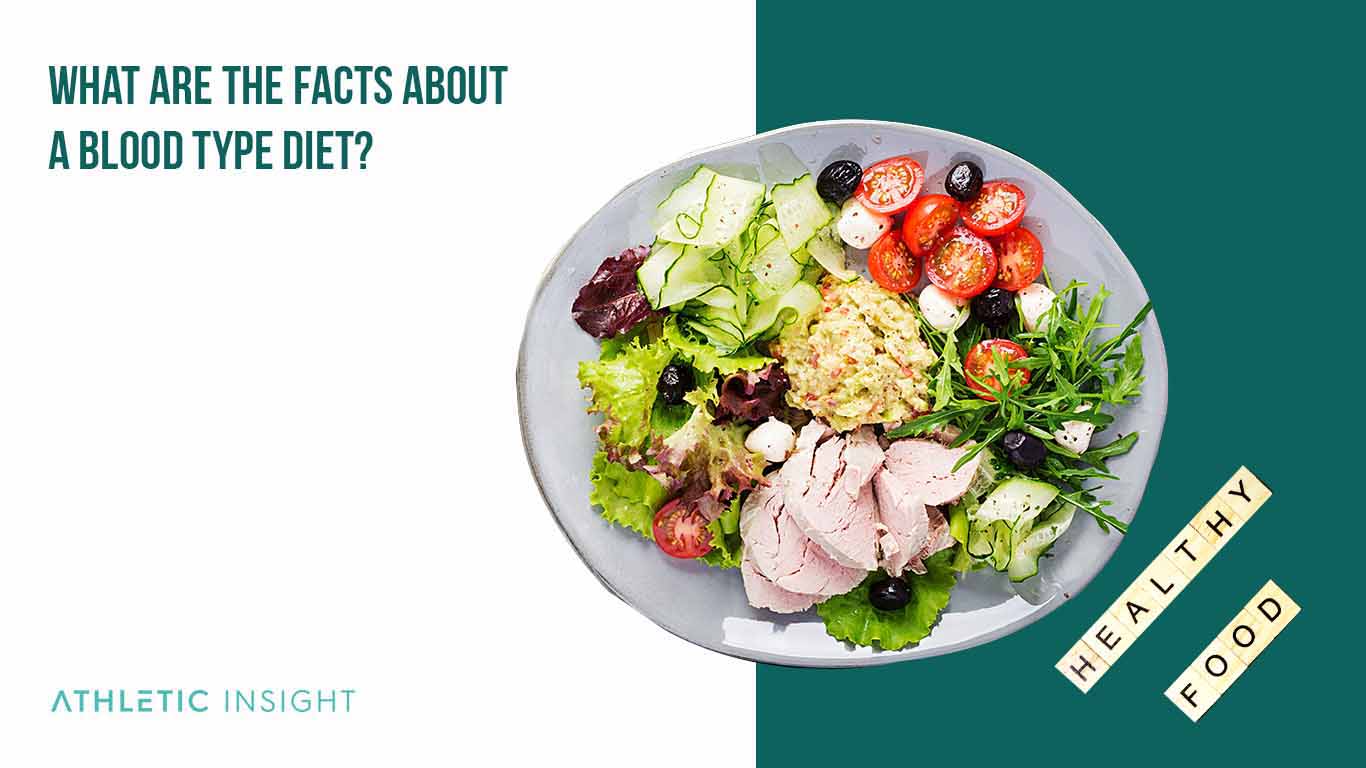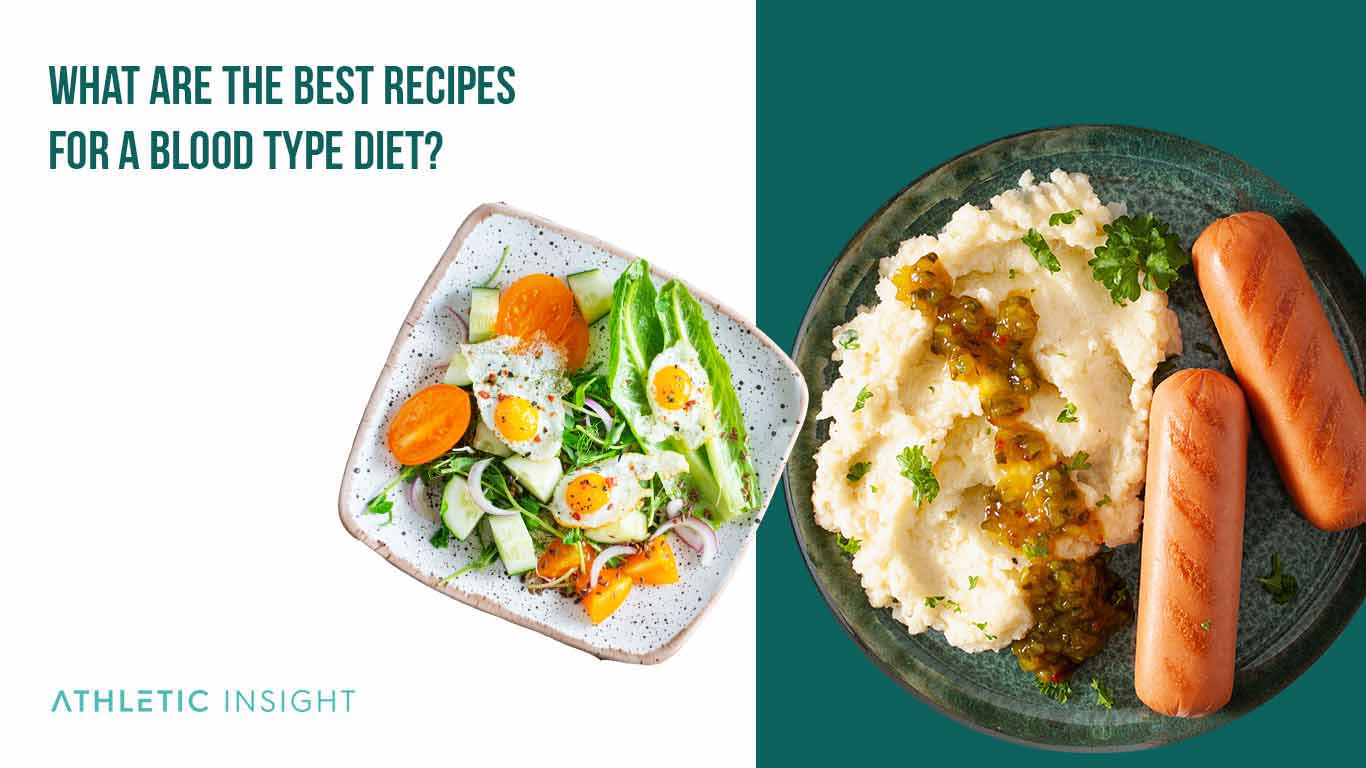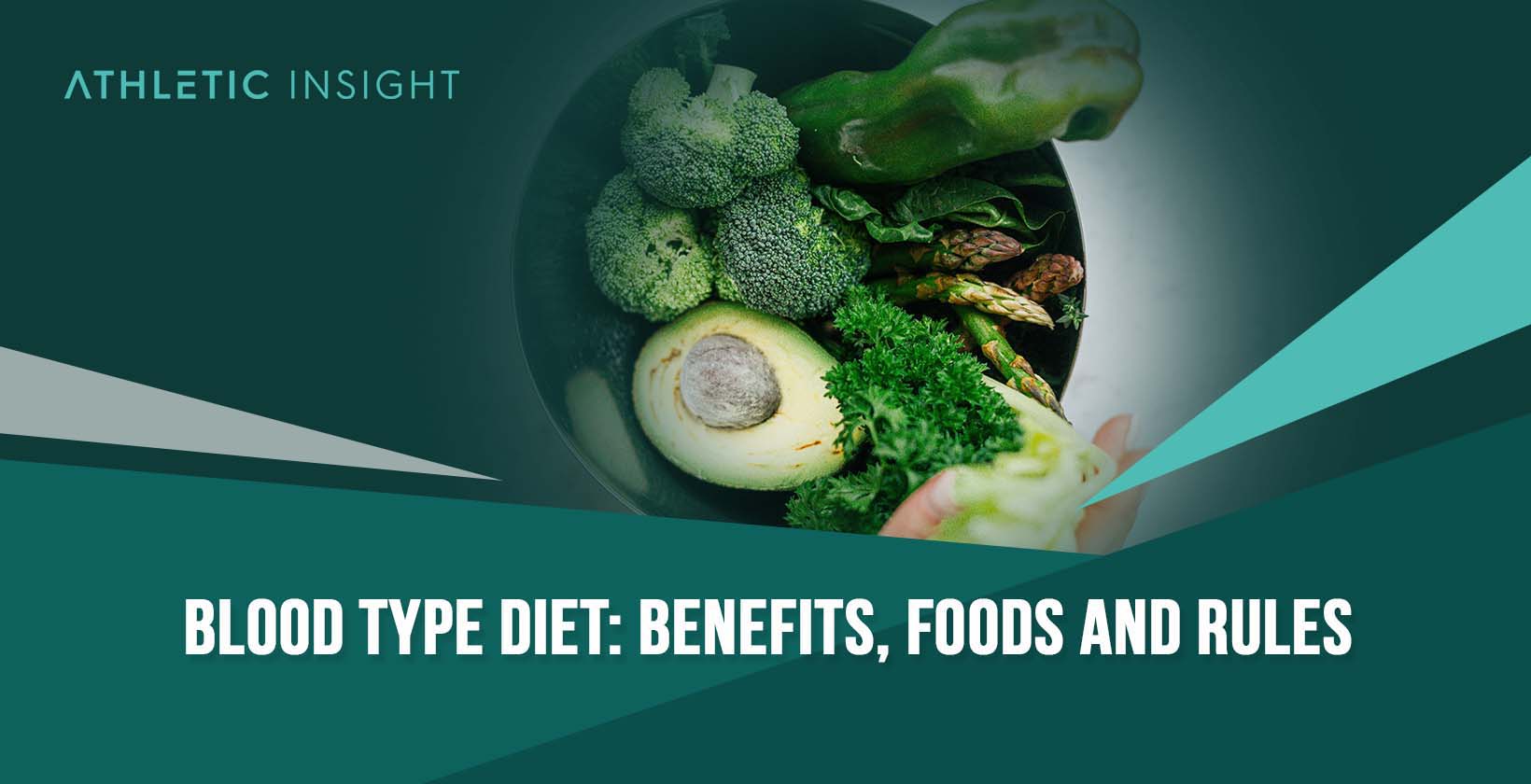A blood type diet is a diet based on your individual blood type. The blood type diet is based on the theory of evolution and how different blood types have changed over time. A specific diet caters to your needs, depending on your blood type.
Your blood type tells you the makeup of the blood in your body. Knowing your blood type helps in the event of an emergency if you need to give or receive blood and when you’re planning for pregnancy.
Some blood types are more prone to health concerns. Your blood type and diet work together to help you live a healthier, more productive life.
Before starting a blood type diet, you should first get your blood tested. Once you have checked your biomarkers and know where you need improvements, you can then start a blood type diet.
What Is the Blood Type Diet?
The blood type diet revolves around determining what foods to eat based on your blood type. Different blood types are separated into different categories based on blood type patterns.

A type A blood type diet will focus on plants and avoiding red meat. A type B blood type diet eats most everything, with limited dairy, wheat, lentils, and tomatoes. The type O blood type diet is high in protein and limited in grains.
The least common blood type diet is the AB blood type diet, which is a mix of type A and type B diets. Your blood type is determined by the presence or absence of antigens in your blood. The most popular blood type is O+, found in 37% of people worldwide. The most popular blood type diet came around in the 1990s, popularized by the book by Dr. Peter D’Adamo.
Effectively completing a blood type diet depends on your blood type and commitment level. For example, following an A+ blood type diet will provide health benefits in the long run if they stick to the approved diet food list.
Taking on a diet according to blood type does not guarantee extra costs. Most foods are common ingredients, and you can purchase them at a local grocery store without expecting to pay more.
How Does the Blood Type Diet Work?
The blood type diet works based on the science of understanding how different blood types function. The B+ blood type diet focuses more on plants and protein, with grains, wheat, and limited dairy. It is primarily due to people with B+ blood type needing the nutrients provided by these foods.
Following a blood type diet is as easy as signing up online. By heading to the dadamo.com website, you can sign up to receive meal plans, resources, and support from the team.
With a subscription, you can log on quickly and find information about your blood type and the food options.
You can also find recipes specific to your blood type, supplements to assist you along the way, and plenty of resources and expert assistance.
Canceling your subscription is easy. You simply log on and visit your account options.
What Are the Phases of a Blood Type Diet?
There are a few helpful phrases for getting started with the blood type diet.
- Phase 1: Pick the most common foods that you need to avoid.
- Phase 2: Replace them with five foods on the approved list for your blood type.
- Phase 3: Slowly replace more foods on the avoid list with foods from the approved list.
- Phase 4: Begin adding daily supplements designed for your specific blood type.
Keep track of what you eat and how you feel along the way. It will show you if the diet is working or not. Each phase is simple and should take no longer than a week or two to employ completely.
What Are the Health Benefits of a Blood Type Diet?
Some well-known health benefits of a blood type diet include the following.
- Minimizing processed foods
- Increased energy
- Weight loss
- Avoiding feeling malaise
These benefits stem from a diet that focuses on whole foods and minimizes processed foods from a lifestyle. The diet also encourages adding regular exercise to your routine.
The pros and cons of a blood type diet are more concerned with any preexisting conditions an individual might have, such as diabetes or heart disease.
What Are the Health Risks of Blood Type Diet?
The primary concern with a blood type diet is disregard for preexisting conditions. Other risks focus on the following.
- Increased consumption of animal proteins
- Possible depletion of nutrients
- Cardiometabolic concerns
Most of the blood type diet concerns revolve around the unproven nature of the science behind the blood type diet. Scientists tend to think that the blood type diet is ineffective and poses more of a health risk than a benefit.
What are the different blood types?
There are four main blood types: A, B, AB, and O, each can be positive or negative depending on the presence of the Rh factor. A blood type is passed genetically from parents and determines what blood type diet will work best for you.
How To Do a Blood Type Diet
The first step to starting a blood type diet is learning your blood type. It is a vital piece of information, as you could find yourself in an emergency where a transfusion is needed.
To begin a diet based on blood type, follow these steps.
- Learn your blood type
- Find the correct blood type diet
- Eliminate foods to avoid
- Add foods from the approved list
- Begin exercising regularly
- Record how you feel
Following these steps carefully will get you started on the blood type diet without overwhelming your system with sudden changes.
What Foods Can Be Eaten on a Blood Type Diet?
Each blood type can eat different foods on the blood type diet.
- O blood type diet: High protein with some fruits and vegetables
- A blood type diet: Lots of fruits and vegetable-heavy choices
- B blood type diet: Plants, some dairy, and most meat (but not chicken or pork)
- AB blood type diet: Lots of seafood, beans, grains, and dairy
The goal of the blood type diet across all blood types is to eliminate processed foods. Anyone on the blood type diet will regularly consume more whole foods.
Dr. D’Adamo claims the blood type diet stems from an understanding of the evolution of each blood type, with specific foods corresponding to health benefits for certain individuals. The approved foods list is different for each blood type diet.
What Foods Cannot Be Eaten on a Blood Type Diet?
Every blood type has a different list of foods to avoid. Depending on which blood type you have, you can expect to cut a lot of typical food items from your diet.
- O blood type: O blood type diets should avoid wheat, corn and dairy
- A blood type: A blood type diets should avoid dairy, wheat, corn, and kidney beans
- B blood type: B blood type diets should steer clear of chicken, corn, peanuts and wheat
- AB blood type: AB blood type diets should avoid chicken, corn, buckwheat and kidney beans
In all blood type diets, you should avoid processed foods entirely. Processed foods will wreak havoc on your system during a blood type diet. When starting a blood type diet, blood type fun facts might help you learn more about your needs and tendencies.
What Is the Level of Effort to Follow a Blood Type Diet?
It takes an extreme level of effort to follow a blood type diet. A blood type diet is rigorous and comprehensive. It requires changing all aspects of your life and food habits.
Blood type diets also require more exercise and better sleep habits. Beginning a blood type diet often means changing your lifestyle. It takes extreme effort to start one and stick with it.
What Is the Cost of Following a Blood Type Diet?
Different subscription plans are available for anyone interested in following a blood type diet. You can also follow a basic plan from the internet that requires no subscription.
The average cost for a subscription is under $25. Some subscriptions that offer more extensive programming and resource assistance will cost more. Besides a subscription, you could see increased expenses at the grocery store if you choose to purchase all organic foods.
While organic foods are not a requirement for a blood type diet, it isn’t a bad idea if you want to change your habits drastically. If you choose to move to whole foods without buying all organic, you will save money at the grocery store. If you start using supplements, the cost of the diet will increase.
What Are the Facts About a Blood Type Diet?
The blood type diet facts suggest that it promotes healthy weight loss and increased energy. It may also help with building allergy resistance and boost your immune system.

The blood type diet is easy to follow, although it takes an extreme effort level to stick with it. While the recipes themselves are not complicated, cutting out certain foods will prove difficult. The beginning stages of the blood type diet tend to be the hardest.
You can find easy diets to follow online without subscribing to a plan.
While the blood type diet is a good option for anyone looking to improve their health and maintain a healthy lifestyle, some people should consult a physician before starting any extreme diet.
Anyone with a preexisting condition should not start the blood type diet without consulting their physician first.
Although the blood type diet receives great praise, some pundits are more reserved about the benefits since there have not been any clinical trials to prove these advantages.
How Effective Is a Blood Type Diet for Weight Loss?
The blood type diet is an effective way to lose weight. The primary benefit of the blood type diet for weight loss is how it cuts out all processed foods. The more whole foods you consume, the easier it will be to lose weight and maintain a healthy lifestyle.
Processed foods make weight loss difficult. Removing them from your system during a blood type diet will make weight loss much easier.
How Easy Is a Blood Type Diet to Follow?
The blood type diet is easy to follow, although it does take an extreme level of effort. While the general rules and recipes are not difficult to follow, other factors make a blood-type diet challenging to follow.
Cutting out foods can prove difficult. Once you eliminate them from your diet, the difficulty will dissipate. But permanently removing them will be difficult in the early stages.
Some difficulty will arise from the strictness of the diet. Some difficulty will also come from finding certain foods. If you decide to pursue a completely organic version of the diet, you may struggle to find the food items you need at local grocers.
For general recipes for your blood type, you can find various ideas for easy diets to follow.
What Are the Best Practices to Follow a Blood Type Diet?
There are a few tips you can apply to follow a blood type diet successfully.
- Purge your house of all junk food
- Stick to approved food from your blood type diet chart.
- Don’t splurge
- Avoid cheat days at the outset
- Keep a strict calendar
- Follow a published plan
- Consider reading a blood type diet book
- Experiment with different recipes
- Keep a goals journal
- Track how you feel with different foods
Who Should Do a Blood Type Diet?
Anyone can do the blood type diet if they are interested in losing weight, feeling better, or simply adjusting their lifestyle. The blood type diet is only restrictive by blood type. So following your blood type diet is possible no matter what stage of life you find yourself in.
You should consider consulting a physician before beginning a blood type diet if you have a preexisting condition or if you have struggled with any health issues in the past. Food allergies may prevent you from following your blood type diet strictly.
What Are the Best Recipes for a Blood Type Diet?
It’s easy to find great recipes for the blood type diet. For example, a beetroot soup recipe that features coconut milk, turmeric, and lentils would be perfect for a blood type A diet.

Beef and quinoa meatballs would be helpful for a blood type O diet. It focuses on protein without harmful wheat, corn, or dairy. It makes the recipe perfect for O blood types.
Each blood type diet has different requirements, so finding a recipe specific to your blood type requires digging. However, websites like Weight Watchers have plenty of helpful diet recipes no matter what blood type diet you’re on.
What Is a Sample Menu for a Blood Type Diet?
Depending on your blood type diet, the daily menu will vary. For a blood type diet B plan, you might eat eggs and yogurt for breakfast, a nice salad with plenty of greens for lunch, and a big steak with asparagus or Brussel sprouts for dinner.
For an AB blood type diet, you might eat something very similar. For breakfast, you could have eggs and bacon, a big salad topped with black beans for extra protein, and a baked salmon fillet for dinner with broccoli, cauliflower, and onions.
Does Diet and Lifestyle Vary with Different Blood Types?
No, when looking at the data and scientific evidence put forward so far, there does not seem to be a correlation between your blood type and the type of diet plan or lifestyle to live. If you stick with the basics of eating healthy and in moderations, exercising, getting good sleep and exposing yourself to sunlight, you’ll see a wealth of benefits.



